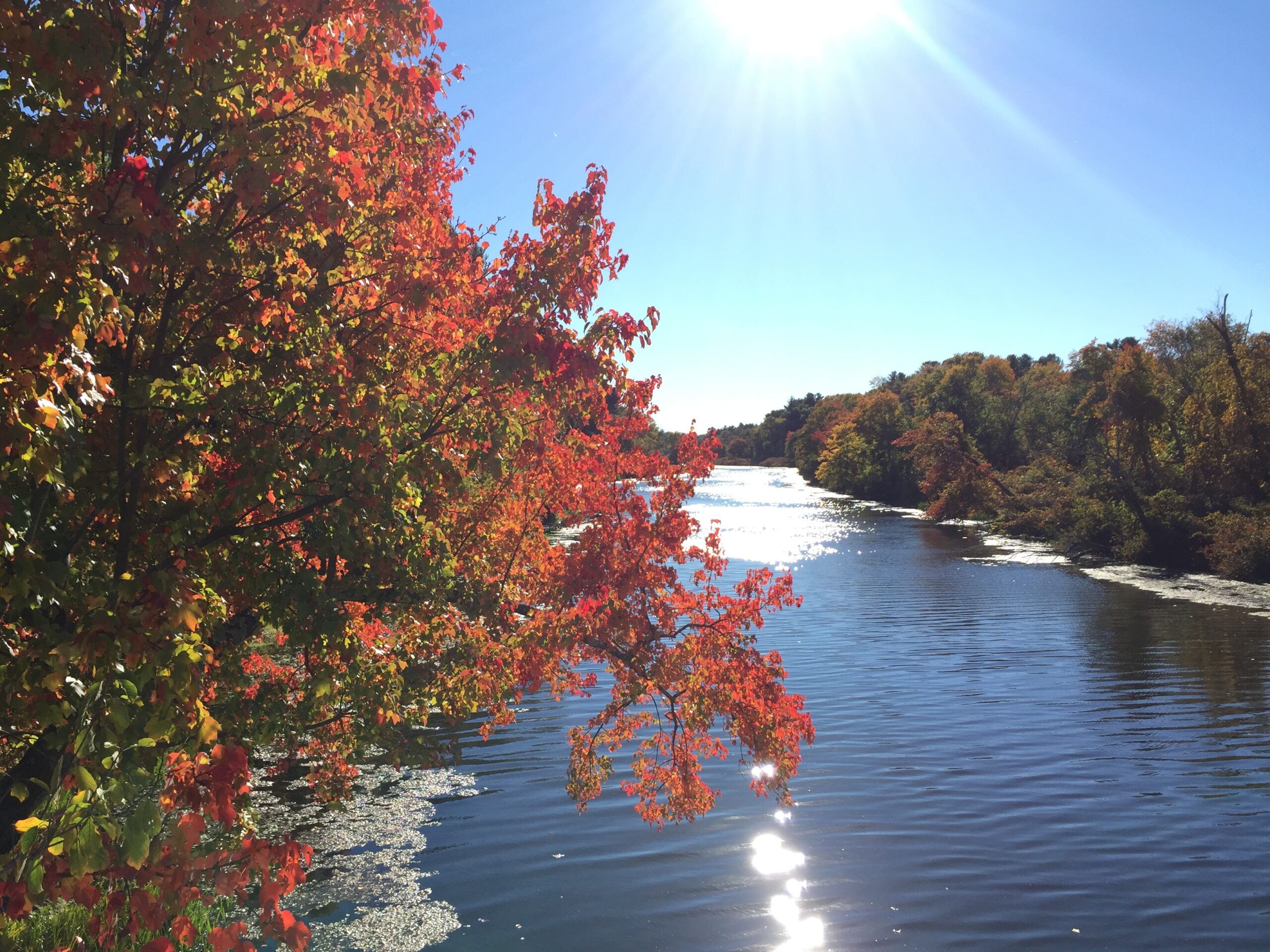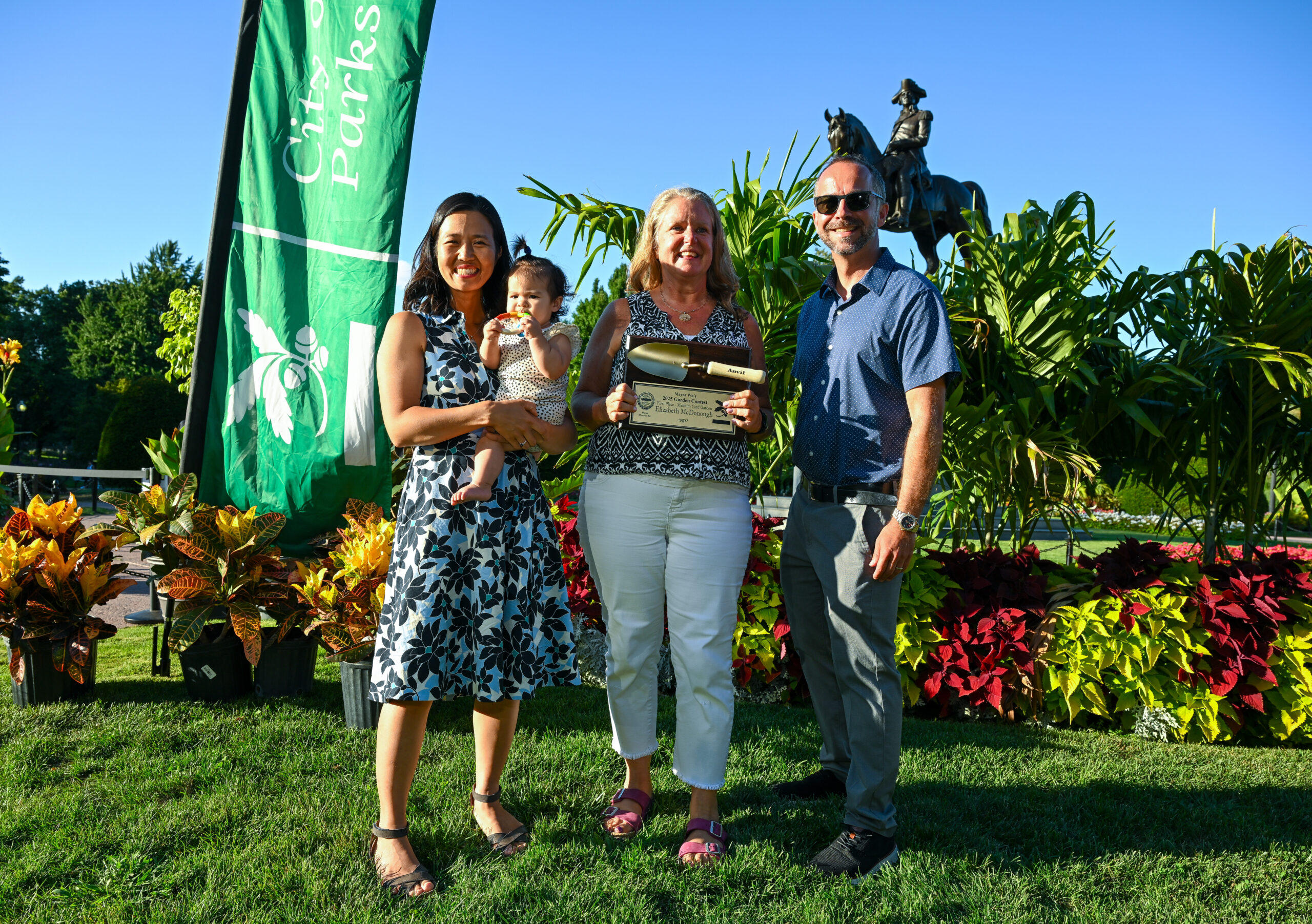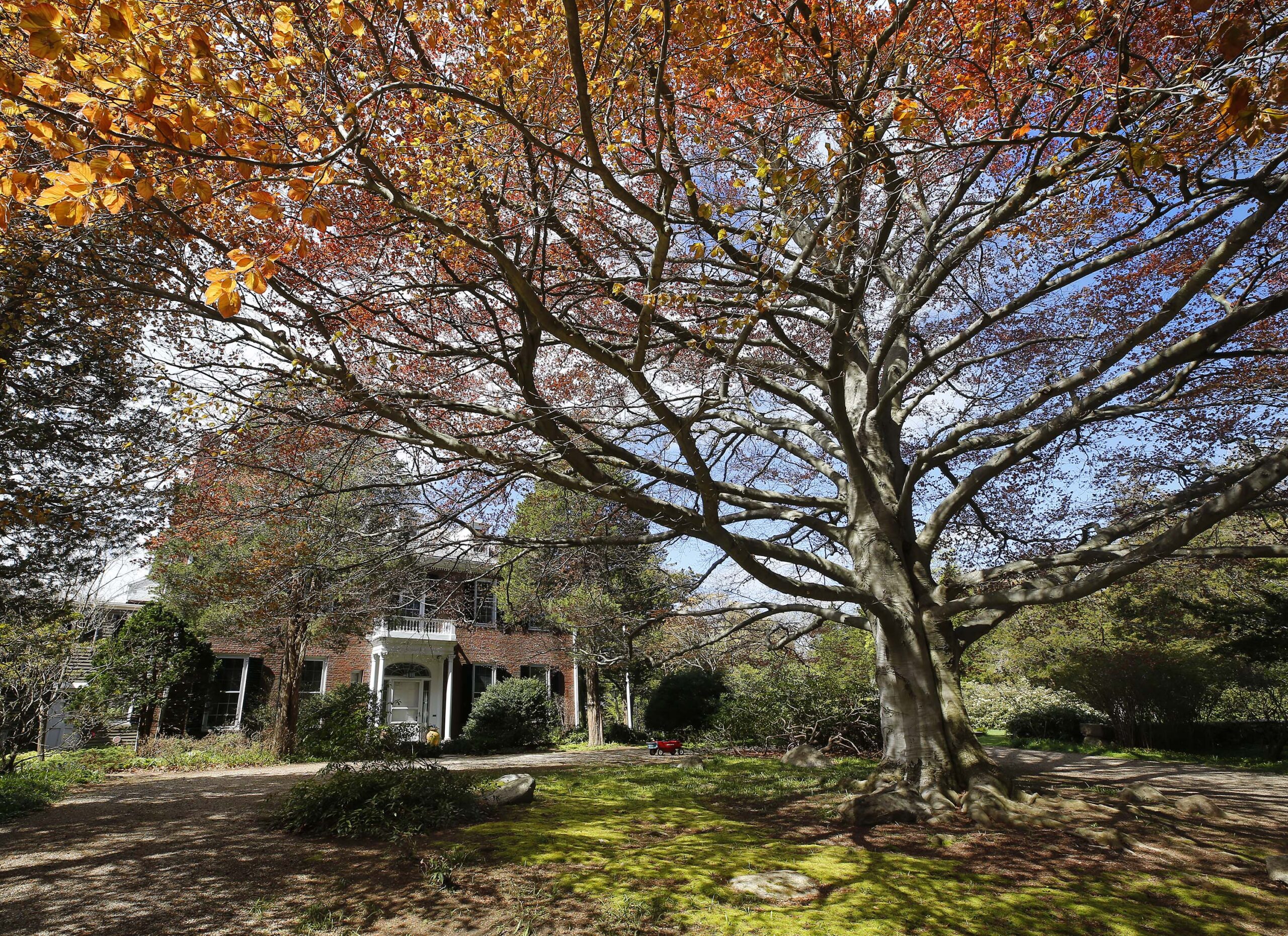
Photo by Winslow Townson
A relatively new and deadly problem is looming over Massachusetts’ forests: Beech Leaf Disease (BLD). With no cure and an expected lifespan of only a few years once infected, this fatal diagnosis has already touched over 72 beech trees across nearly every Trustees cultural landscape and many more in our other natural places.
“The list of trees we’re concerned about in our cultivated landscapes is growing,” said Joann Vieira, Trustees Director of Public Gardens & Horticulture. “The Stewardship and Horticulture Teams are conducting thorough examinations across our properties so we can support overall tree health where infestations are minor.”
Much remains unknown about BLD, which is believed to be spread by wind, rain, mammals, birds, and insects carrying microscopic organisms that infest the trees’ leaves. However, once a beech tree is infected, current treatment options have only appeared to prolong the expiration process, not stop it entirely.
“For decades, pests and disease have been a major problem, and it’s only accelerated with climate change,” said Vieira. “With Beech Leaf Disease now in the mix, it’s even harder to preserve these important trees for the next generation.”
What is Beech Leaf Disease (BLD)?
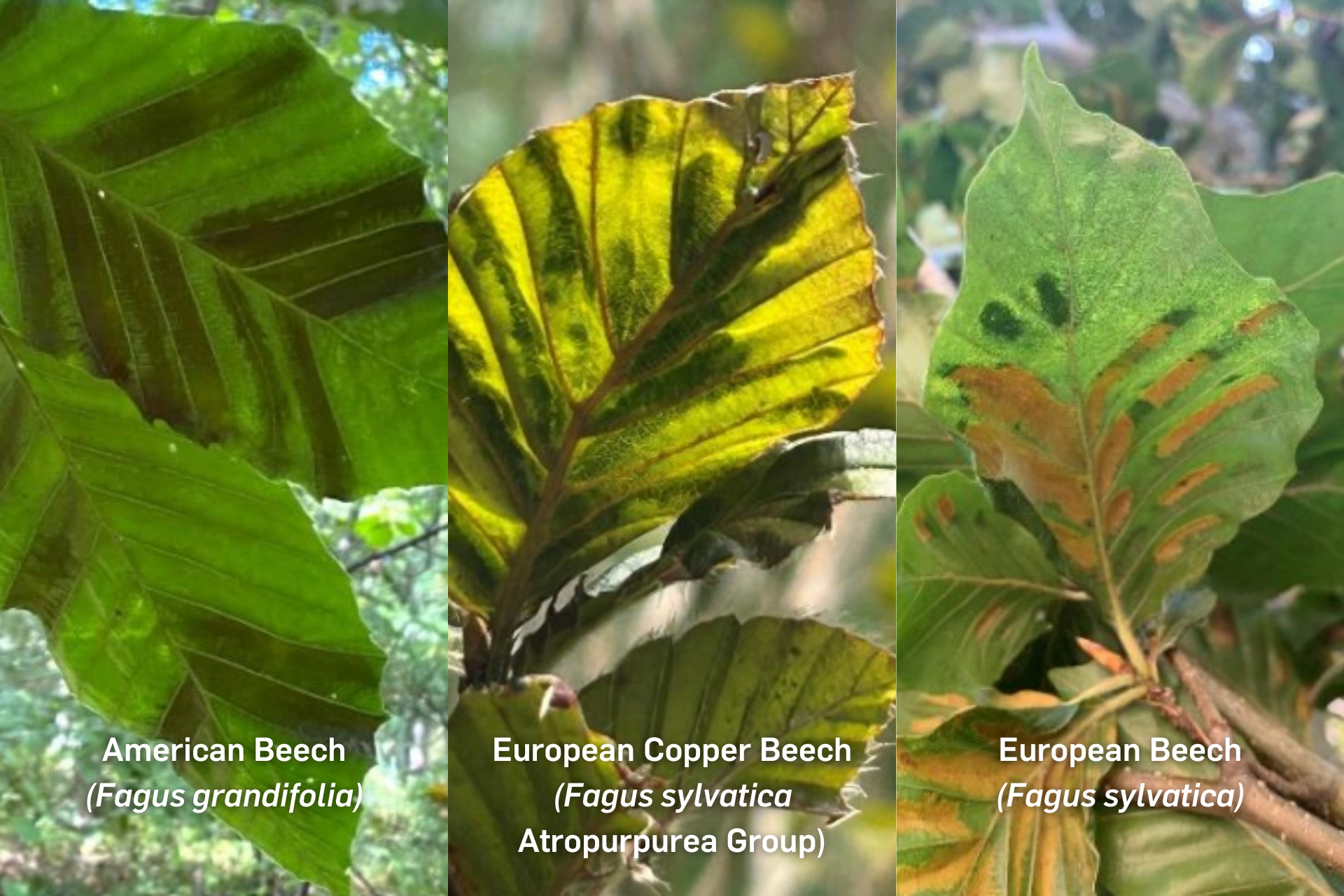
First appearing in northeast Ohio in 2012, BLD alters the trees at a cellular level, affecting leaf growth and reducing their ability to photosynthesize. The disease has rapidly spread eastward into New England over the past decade and has now infested trees at most Trustees reservations, public gardens, and cultural landscapes.
“Beech trees are such an important plant for the ecosystem,” said Vieira. “It’s right up there with oaks for supporting wildlife in the New England woods.”
All species of this critical tree appear to be susceptible to BLD which begins with bud and leaf infestations (heavily infested leaves drop prematurely), leaves failing to emerge, and eventually branches dying back. The whole tree mortality takes anywhere from 6–10 years, but New England beech trees appear more susceptible, often succumbing in 4–5 years, and some young trees perishing in only two years.
“The challenging thing is there’s not a lot you can do,” said Vieira. “We’re prioritizing the overall health of our trees to help them get through this until a solution can be found.”
Affected beech trees can be identified by their damaged leaves (hence the name), which exhibit dark interveinal banding easiest to spot when backlit. When infections are severe, leaves may also be curled and distorted. The photos above show a depiction of what this looks like in American beech (Fagus grandifolia, left), European copper beech (F. sylvatica Atropurpurea Group, center), and European beech (F. sylvatica, right).
“Our native beech tends to form dense clonal thickets within forests,” said Vieira, “and when that whole thicket is lost, we don’t know what will come up in its place.”
How is The Trustees Combating the Disease?
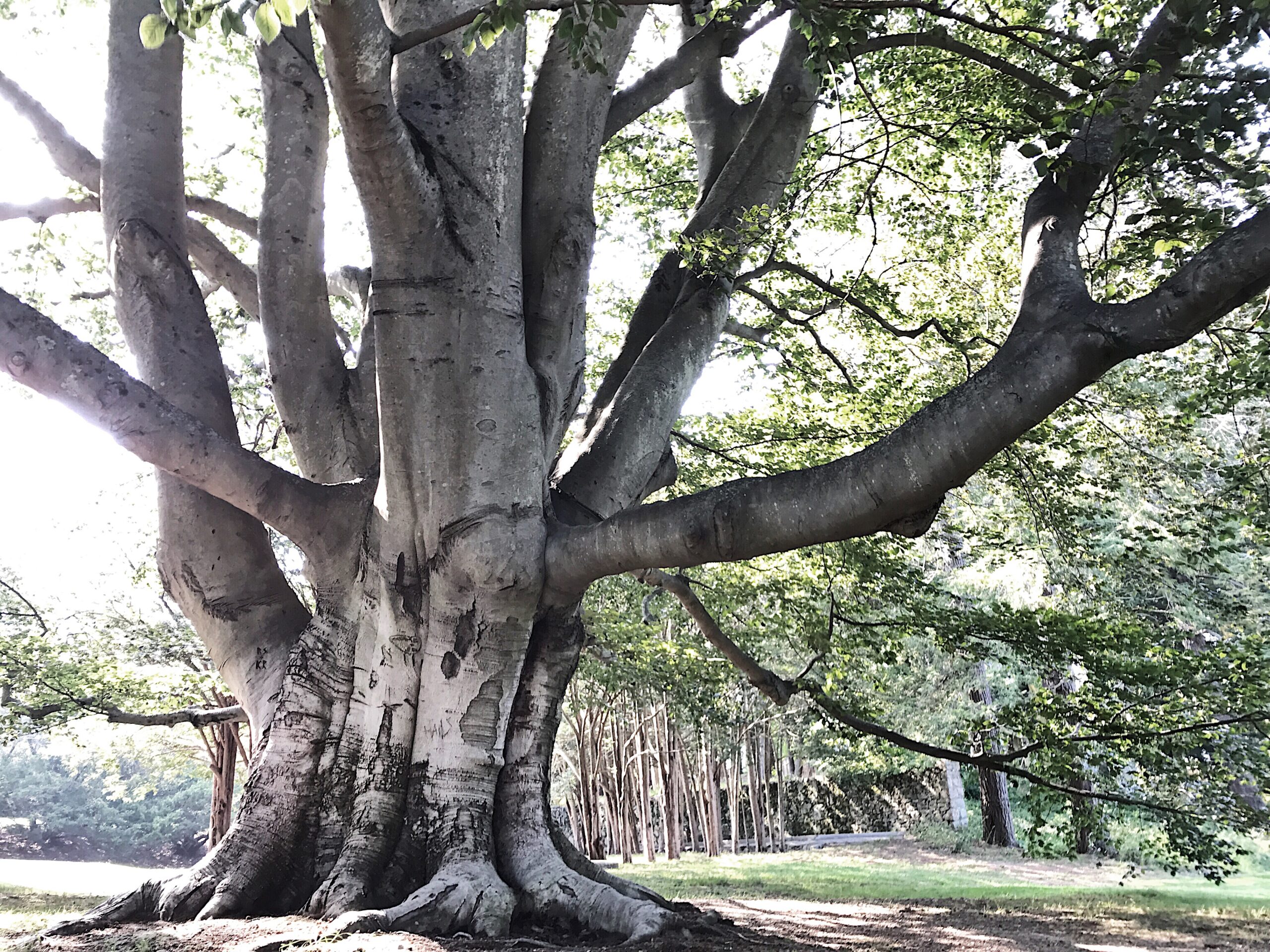
Unfortunately, in these forested areas, there’s no practical mitigation that can be done. However, in Trustees cultural landscapes, key steps are being implemented to slow down BLD’s impact on trees that are still relatively healthy, historically important, or in prominent locations in the landscape.
“Most current treatments are heavily chemical-based and have the potential to impact the surrounding ecosystem,” said Vieira. “So, we avoid that as much as possible while still preserving top-priority trees in significant landscapes.”
In place of harsh chemicals, The Trustees is focusing on irrigating the beech trees during times of drought with supplementary watering. Additional bark or leaf mulch and compost are being spread to trap the soil’s moisture and give the trees additional vital nutrients. The soil’s pH is also being monitored to keep it within healthy conditions, and foot traffic is being limited under the beech trees. Supplemental fertilizers and bark treatments for other diseases also help to keep these trees in prime shape.
“There are still many unknowns when it comes to this disease,” said Vieira. “We’ve reached out to people across the region to pull the best minds together and keep informed of what approaches work best and what advances are on the horizon.”
What Happens Next?
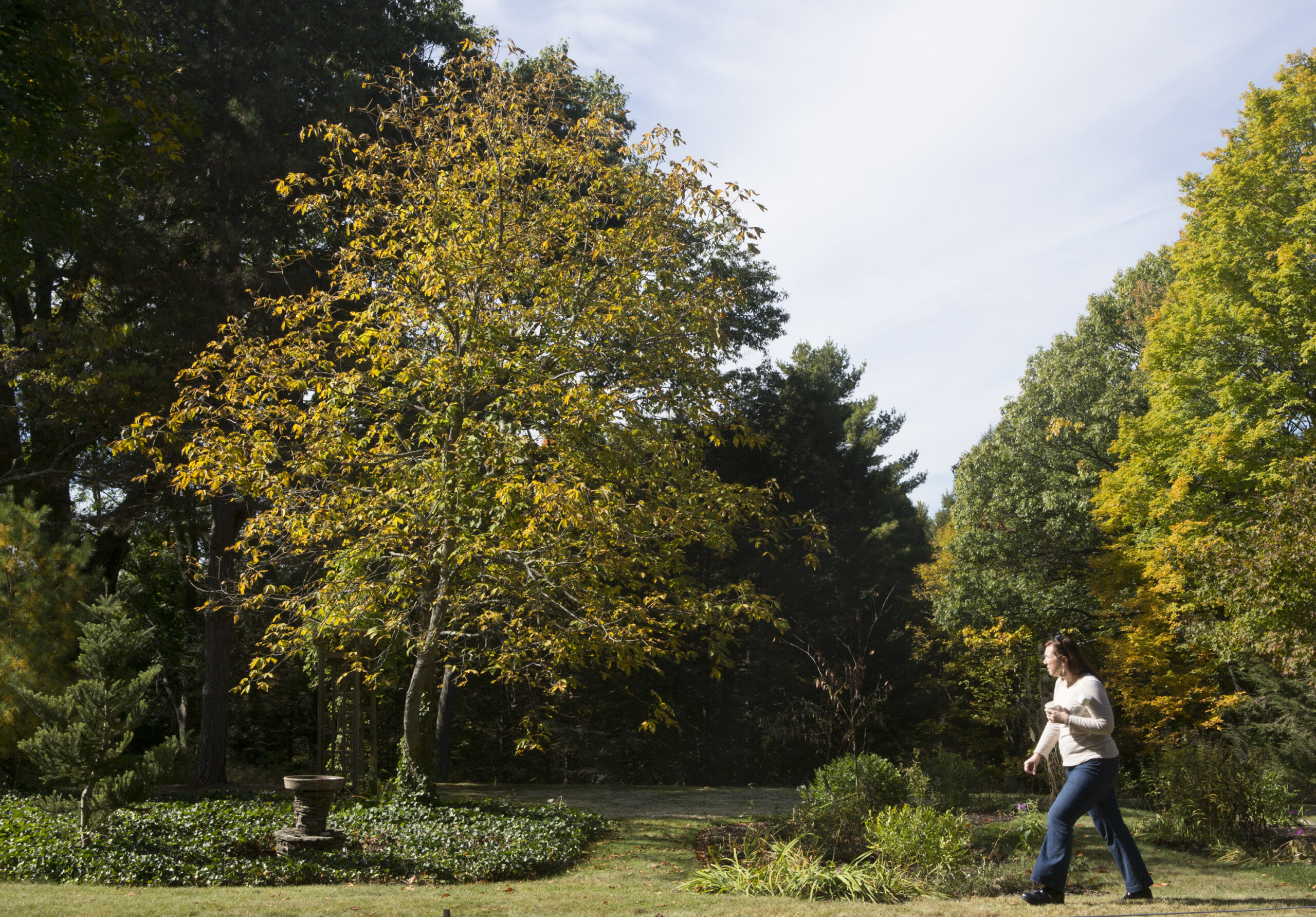
While researchers and arborists continue to work on a solution to control BLD, it is premature to proactively cut down trees unless they’re dead or hazardous. Based on how the disease is believed to spread, the disease quickly covers long distances, meaning it is highly unlikely that removing infected trees would have a beneficial effect.
However, a valuable course of action anyone can take is to start planning and planting the next generation of veteran trees. Many native trees that occur in association with beech can be used in forests and natural areas to provide similar structure and valuable wildlife resources.
“The more diverse our landscapes are, the more possibility there is to keep the forests standing when disease like this moves in,” said Vieira.
How can you make a difference and support our efforts?
Become a Member! Your annual support helps fund critical conservation and preservation efforts across Massachusetts.
The Trustees will continue to monitor treatment options and alter our approach to Beech Leaf Disease (BLD) as the science evolves.
